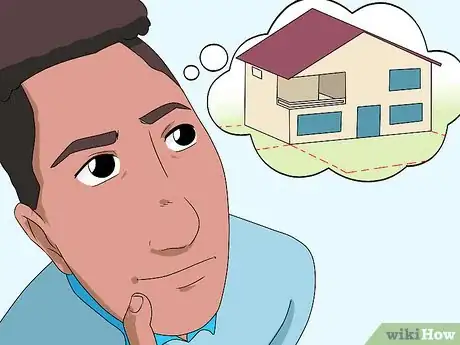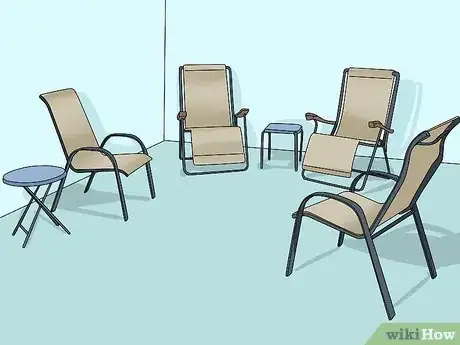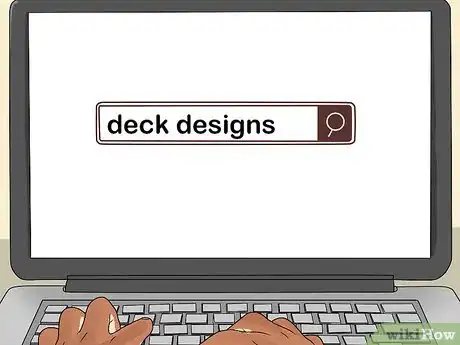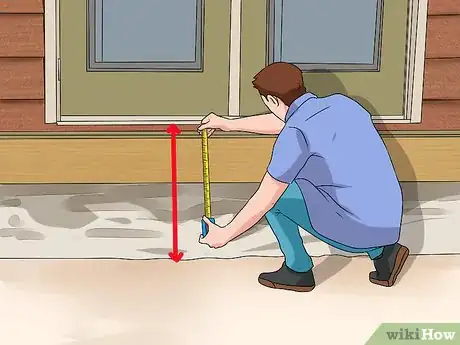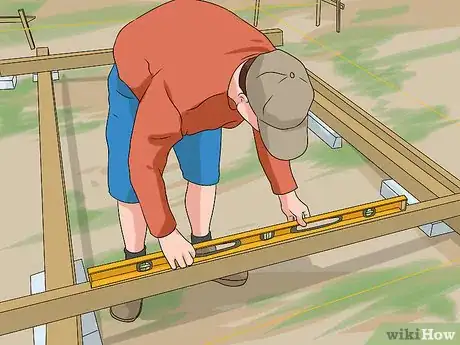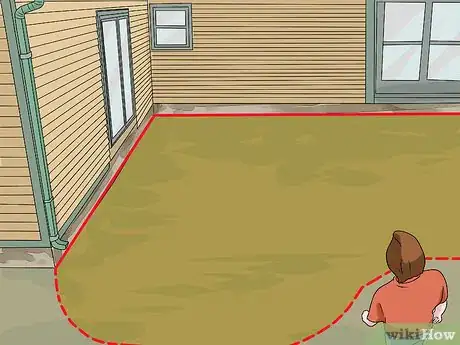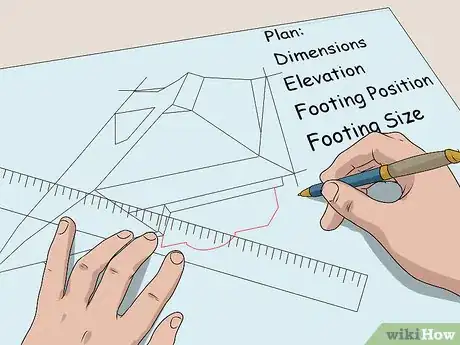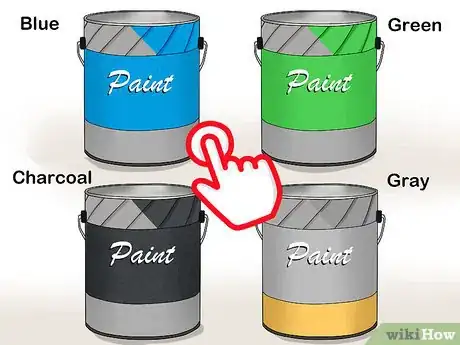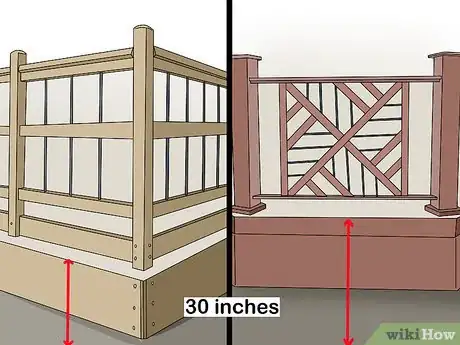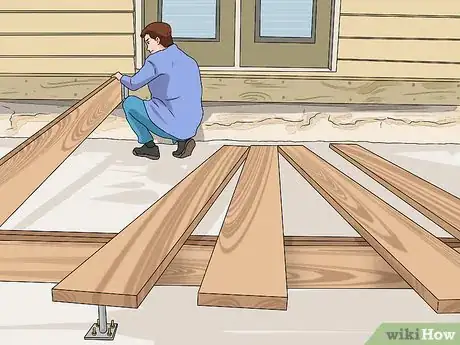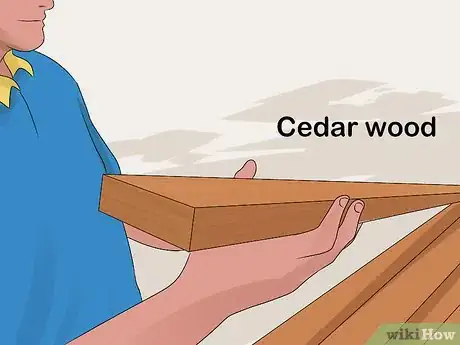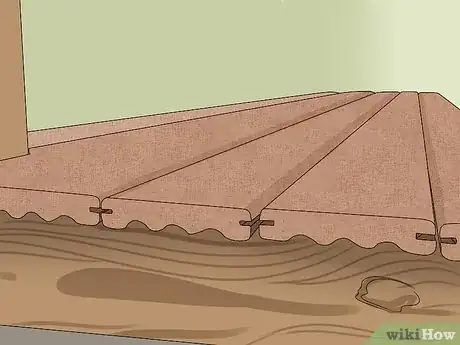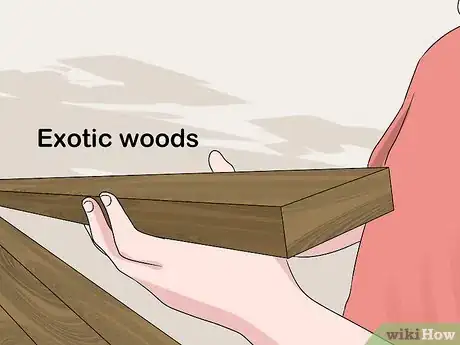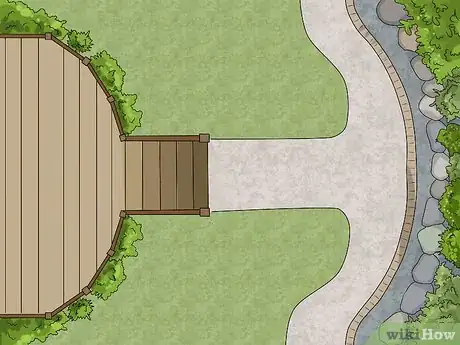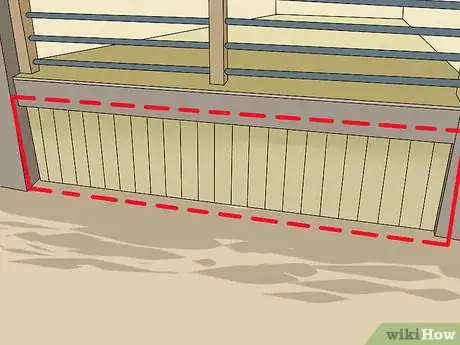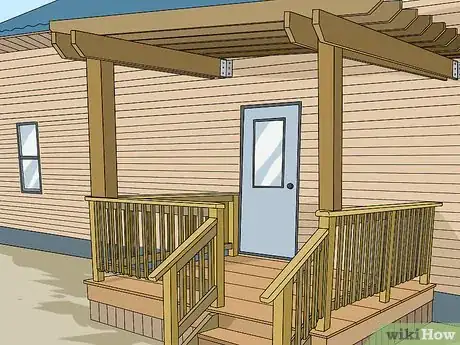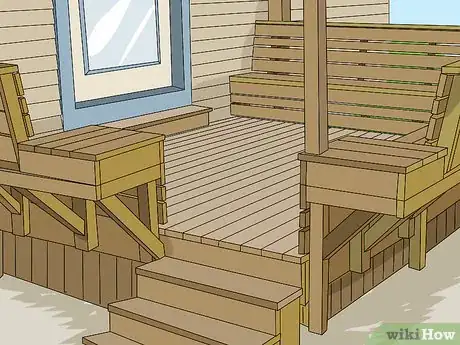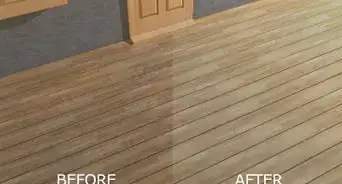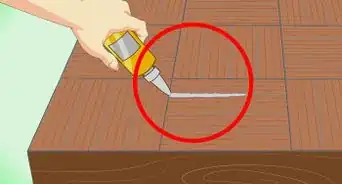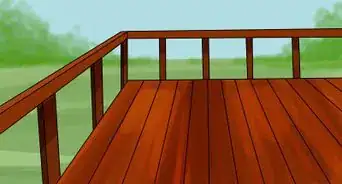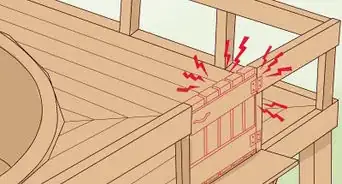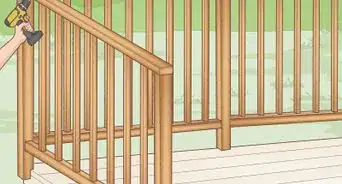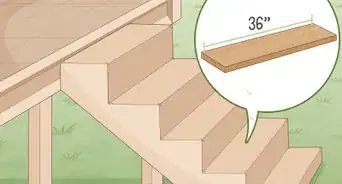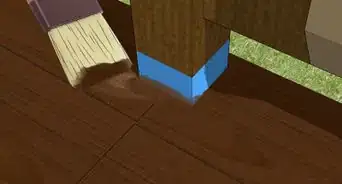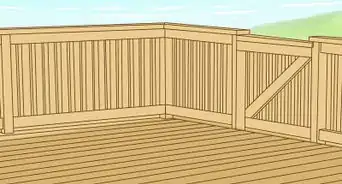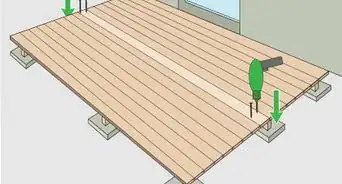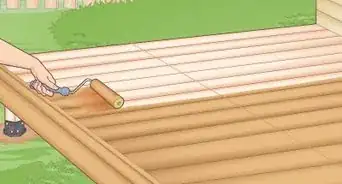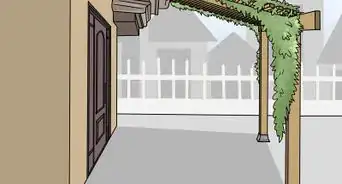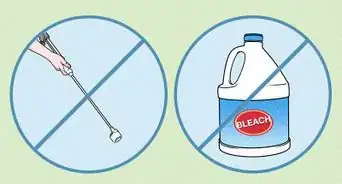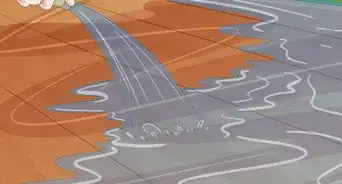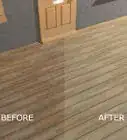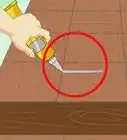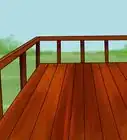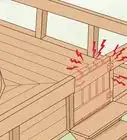This article was co-authored by wikiHow staff writer, Kyle Hall. Kyle Hall works on the content team at wikiHow. He helps manage our team of editors and creates content for a variety of wikiHow projects. Kyle continually looks for new ways to improve the content at wikiHow and make it more helpful and enjoyable for readers. He graduated from Eckerd College in 2015, where he majored in Political Science.
This article has been viewed 33,890 times.
Learn more...
Designing your own deck can be an exciting process, but there are a lot of things you have to take into consideration. It’s important that you make a budget and decide what purpose you want your deck to serve. Once you understand your goals, you can decide what shape and color your deck will be, and what material it will be made out of. From there you can add personal touches to your design to make your deck unique and fit for your lifestyle.
Steps
Determining Your Design Goals
-
1Make a budget. The design of your deck will depend a lot on how much you can spend. Consider the cost of materials, labor (if you won’t be building the deck yourself) and any landscaping that needs to be done. Make a budget before you start designing your deck so you know what you can and can’t afford.
-
2Determine what you’ll be using your deck for the most. Do you have a lot of outdoor parties at your place? If so, you’ll probably want a large, wide-open deck. If you just want a spot to sit outside and have a glass of wine or read a book, you can cut costs by going with a smaller deck. Really think about what function you want your deck to serve so you can design it accordingly.[1]Advertisement
-
3Decide what kind of furniture you’ll put on your deck. If you know you want to have a couch, a table, and a fire pit, make sure you include space for those in your design. Leave adequate room around furniture for walking so your deck is maneuverable.[2]
-
4Look at other decks for inspiration. Pay attention to the decks at your friends’ and family's houses. Note what you like and dislike about them. Search online for deck designs for a greater range of styles. Just search “deck designs” or “backyard deck ideas.” Pick and choose what you like about the decks you see and consider adding those things to your design.
- Use deck designing software through websites like Trex or Lowe’s to plan out the shape of your deck and get an estimate on the materials.
Putting the Design Together
-
1Figure out how high your deck needs to be. Measure the distance between the ground and the bottom of the door that will lead out onto the deck. This is the height your deck flooring will sit at.
-
2Survey the terrain where the deck will go. Check to see if the ground is flat or slanted. If it’s slanted, you’ll have to factor that into your design.
-
3Decide what shape your deck will be. Go with a basic rectangular deck if you’re on a budget. If you have more money to spend, consider adding curves and angles to your design. Use shape to break up your deck space and make it more practical.
- For example, if you know you want to use four chairs to make a sitting area on your deck, you could design a circular area that extends off the deck and then set up the chairs there. The chairs will all be facing each other so they’ll work well with the circular design.
- Check the water drainage in the area and fix any problems you may have before you build your deck. You don’t want to ruin the flooring of your deck.
-
4Plan how big your deck will be. Keep in mind that the larger you design your deck to be, the more it will cost to build. Make the size of your deck proportionate to the size of your house and yard. You don't want a deck that covers all the grass in your yard or that's bigger than your house.
- If you're designing a large deck, consider breaking up the space with shape. For example, instead of designing a large rectangular deck, you could design the deck so it's multiple rectangles that extend out from the center.
- Keep the deck between 20-30% of your home’s total square footage.
- Pay attention to the length of boards you need. For example, if you want to build a 13 feet (4.0 m) deck, consider switching it to 12 feet (3.7 m) since it is more standard of a board size.
-
5Choose a color for your deck. You can also leave it unpainted if you want it to have a more natural look. If you decide to paint it, choose a color that pairs well with the exterior of your house.[3]
- Choose a bright accent color like blue or green if you want your deck to pop against your house.
- Go with a color like gray or charcoal if you don't want it to be obvious when your deck is dirty.
-
6Choose a railing design if you’re building an elevated deck. If your deck’s going to be over 30 inches (76.2 cm) high, you’ll have to include guard rails in your design. The guard rails will run along the perimeter and down any stairs, so choose a style that you like. If there’s a nice view from your yard, pick a guard rail with posts that are thin and spaced far apart so you can see through them.[4]
- Get creative with your deck railings. Use baroque-style balusters to add an elegant touch to your deck, or pick a railing with aluminum posts to make your deck stand out.[5]
Choosing a Material
-
1Build your deck with pressure-treated wood if you’re on a tight budget. Pressure-treated wood is cheaper but less durable than other deck materials. If you build your deck with pressure-treated wood, you’ll want to stain your deck once a year to protect it. You may start to notice your deck warping, cracking, and changing colors after a few years of use because pressure-treated wood isn't as durable as other decking materials.[6]
- Pressure-treated wood will need to be cleaned with a pressure washer regularly so mold and mildew doesn’t form.
-
2Use cedar for its durability if you can afford it. Cedar costs more than pressure-treated wood, but it will last 15-20 years in the right conditions. Choose cedar if you want something that won’t warp or crack.[7]
-
3Choose composite for a deck that’s low-maintenance. Composite decking is made out of recycled wood and plastic. Composite decking is more expensive than pressure-treated wood and cedar, but you won’t have to worry about it rotting, warping, or cracking. The only upkeep you’ll need to do will be washing the deck off with water.[8]
-
4Consider high-quality exotic woods if you have a big budget. Choose an exotic hardwood for your deck like Tigerwood or Brazilian Redwood if you want your deck to stand out. Exotic hardwoods are more expensive than other materials, but they’re also more durable and visually appealing.[9]
-
5Use aluminum for a waterproof alternative. Aluminum deck material can be purchased online in a variety of colors. Choose aluminum if you want a deck that’s insect-resistant and won’t suffer from water damage. Aluminum is more expensive than wood, but it will be similar in price to composite materials.
Adding Extra Touches
-
1Design a transition area where your deck will meet the yard. Add a path leading from the bottom of the stairs to your garden or around the side of the house. Plant some shrubs at the edge of your deck or add a cement patio you can step on to. Having a transition area will help connect your yard to your deck.[10]
-
2Include skirting around your deck. Skirting will hide dead grass or any items you're storing under your deck. Choose skirting with a bold design or color to give your deck more dimension. For a more minimalist look, choose a plain skirting in the same color as your deck.[11]
-
3Add a covered area to your deck for shade. Add a pergola if you want something stylish that offers partial shade. If you’re interested in full shade, incorporate an awning into your deck design.[12]
-
4Incorporate a built-in deck bench in your design. Include the bench along one of the railings so it has a backrest, or have the bench be in the center of your deck to break up the space. Build the bench with the same material as the rest of the deck so it's clear the bench is an extension of your deck.
References
- ↑ http://www.decks.com/how-to/535/10-tips-for-designing-a-great-deck
- ↑ http://www.decks.com/how-to/535/10-tips-for-designing-a-great-deck
- ↑ http://www.bhg.com/home-improvement/deck/ideas/deck-colors/
- ↑ http://www.decks.com/how-to/538/site-views---house-yard-elevation
- ↑ http://www.decks.com/how-to/245/deck-railing-designs
- ↑ http://www.decks.com/how-to/539/budget---determines-deck-size-and-materials
- ↑ https://www.familyhandyman.com/decks/comparing-deck-wood-cedar-pressure-treated-wood-composite-decking/view-all/
- ↑ https://www.familyhandyman.com/decks/comparing-deck-wood-cedar-pressure-treated-wood-composite-decking/view-all/
- ↑ http://www.decks.com/how-to/539/budget---determines-deck-size-and-materials

